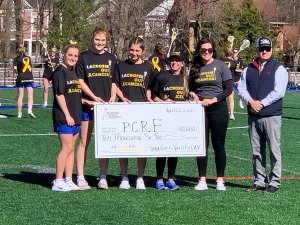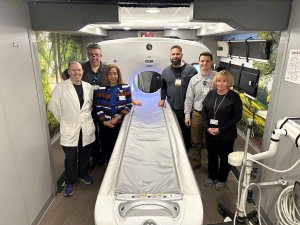CARPAL TUNNEL SYNDROME (CTS) is the most expensive of all work-related injuries. Over his or her lifetime, a carpal tunnel patient pays about $30,000 in medical bills and loses hours of productivity from work absences.
CTS typically occurs in adults, with women three times more likely to develop it than men. The dominant hand is usually affected first, and the pain is typically severe. CTS is especially common in assembly-line workers in manufacturing, sewing, finishing, cleaning, meatpacking, and
similar industries.
WHAT IS CTS?
CTS is a problem of the median nerve, which runs from the forearm into the hand. CTS occurs when the median nerve gets compressed in the carpal tunnel—a narrow tunnel at the wrist made up of bones and soft tissues, such as nerves, tendons, ligaments, and blood vessels. The compression may result in pain, weakness, and/or numbness in the hand and wrist, which radiates up into the forearm. CTS is the most common of the “entrapment neuropathies”—compression or trauma of the body’s nerves in the hands or feet.
WHAT ARE THE SYMPTOMS?
Burning, tingling, itching, and/or numbness in the palm of the hand and thumb, index, and middle fingers are most common. Some people with CTS say that their fingers feel useless and swollen, even though little or no swelling is apparent. Since many people sleep with flexed wrists, the symptoms often first appear while sleeping. As symptoms worsen, they may feel tingling during the day. In addition, weakened grip strength may make it difficult to form a fist or grasp small objects. Some people develop wasting of the muscles at the base of the thumb. Some are unable to distinguish hot from cold by touch.
WHY DOES CTS DEVELOP? 
Some people have smaller carpal tunnels than others, which makes the median nerve compression more likely. In others, CTS can develop because of an injury to the wrist that causes swelling, over-activity of the pituitary gland, hypothyroidism, diabetes, inflammatory arthritis, mechanical problems in the wrist joint, poor work ergonomics, repeated use of vibrating hand tools, and fluid retention during pregnancy or menopause.
HOW IS IT DIAGNOSED?
CTS should be diagnosed and treated early. A standard physical examination of the hands, arms, shoulders, and neck can help determine if your symptoms are related to daily activities or to an underlying disorder. Your doctor can use other specific tests to try to produce the symptoms of carpal tunnel syndrome.
WHAT IS THE TREATMENT FOR CTS?
Initial therapy includes:
• Resting the affected hand and wrist
• Avoiding activities that may worsen symptoms
• Immobilizing the wrist in a splint to avoid further damage from twisting or bending
• Applying cool packs to help reduce swelling from inflammation.
Some medications can help with pain control and inflammation. Studies have shown that vitamin B6 supplements may relieve CTS symptoms.
Chiropractic joint manipulation and mobilization of the wrist and hand, stretching and strengthening exercises, soft-tissue mobilization techniques, and even yoga can be helpful. Scientists are also investigating other therapies, such as acupuncture, that may help prevent and treat this disorder.
Occasionally, patients whose symptoms fail to respond to conservative care may require surgery. The surgeon releases the ligament covering the carpal tunnel. The majority of patients recover completely after treatment, and the recurrence rate is low. Proper posture and movement can help prevent CTS recurrences.
HOW CAN CTS BE PREVENTED?
The American Chiropractic Association recommends the following tips:
•Perform on-the-job conditioning, such as stretching and light exercises.
•Take frequent rest breaks.
•Wear splints to help keep the wrists straight.
•Use fingerless gloves to help keep the hands warm and flexible.
•Use correct posture and correct wrist position.
Dr. Kevy Smith is a chiropractor in Saratoga Springs providing non-surgical treatment of spinal disorders and sports-related injuries. For more information please visit www.MySaratogaChiropractor.com or call 518-597-2064.





























 How to resolve AdBlock issue?
How to resolve AdBlock issue? 









